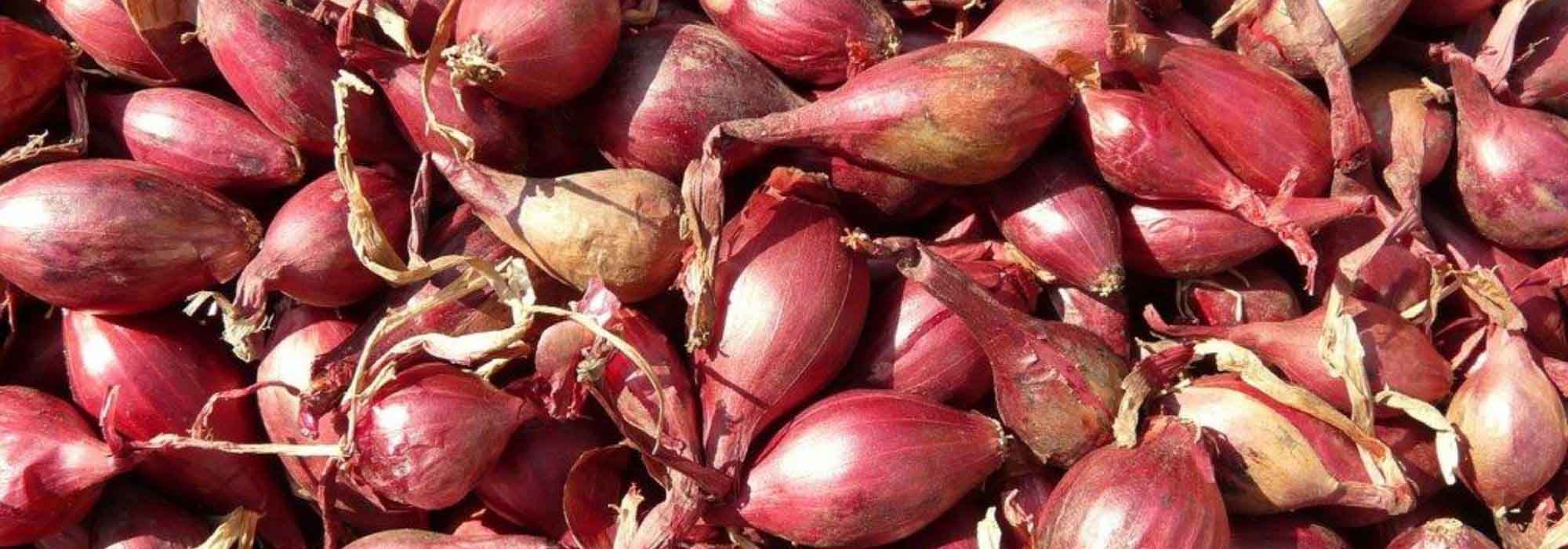
Shallot: planting, growing, harvesting
Contents
Shallot in a nutshell
- Shallot is a root vegetable consumed as a vegetable or condiment for its bulb and leaves, “the green shallot.”
- There are mainly two categories: pink and grey.
- Inextricably linked to French cuisine, it can be eaten raw, cooked, and even confit.
- The shallot is the easiest bulb to grow in any good well-drained soil, without fresh manure.
- It can be harvested green or at ripeness.
A word from our expert
Inseparable from French cuisine, Shallot is grown as a vegetable or a condiment. Its fine-flavoured bulb is most often consumed, but sometimes its hollow stems are used like chives.
There are two types of shallots: the grey shallot, which produces small, long, curved bulbs that are very aromatic, and the pink shallot (or Jersey shallot), which is the most common, with larger, round, long, or semi-long bulbs that are less fragrant but have better storage qualities. They are also distinguished by their planting and harvesting periods: pink shallots are planted in spring (or autumn in mild climates) and harvested in summer from July, while grey shallots are planted in autumn for a harvest starting in June.
Both can be consumed raw to flavour salads and raw vegetables or cooked to enhance meats or béarnaise sauce. They are also delicious when confit. The flesh of the shallot also contains numerous benefits: it is particularly rich in vitamins B, C, E, and minerals.
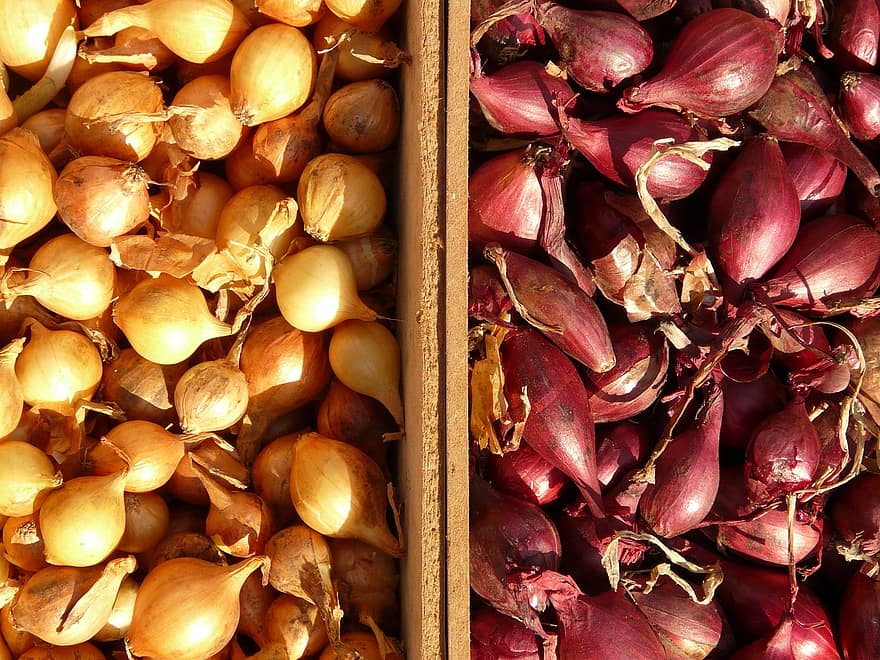 The bulbs of shallots are the parts primarily consumed
The bulbs of shallots are the parts primarily consumed
Growing shallots is simple: they require a sunny exposure and light, well-draining, fertile soil but without fresh manure. As they do not need watering, maintenance consists simply of regular weeding and hoeing.
With all these qualities, they deserve a prominent place in the vegetable garden.
How to grow them for a good harvest, when and how to plant them? Discover everything you need to succeed in growing this essential, tasty little bulb in your vegetable garden!
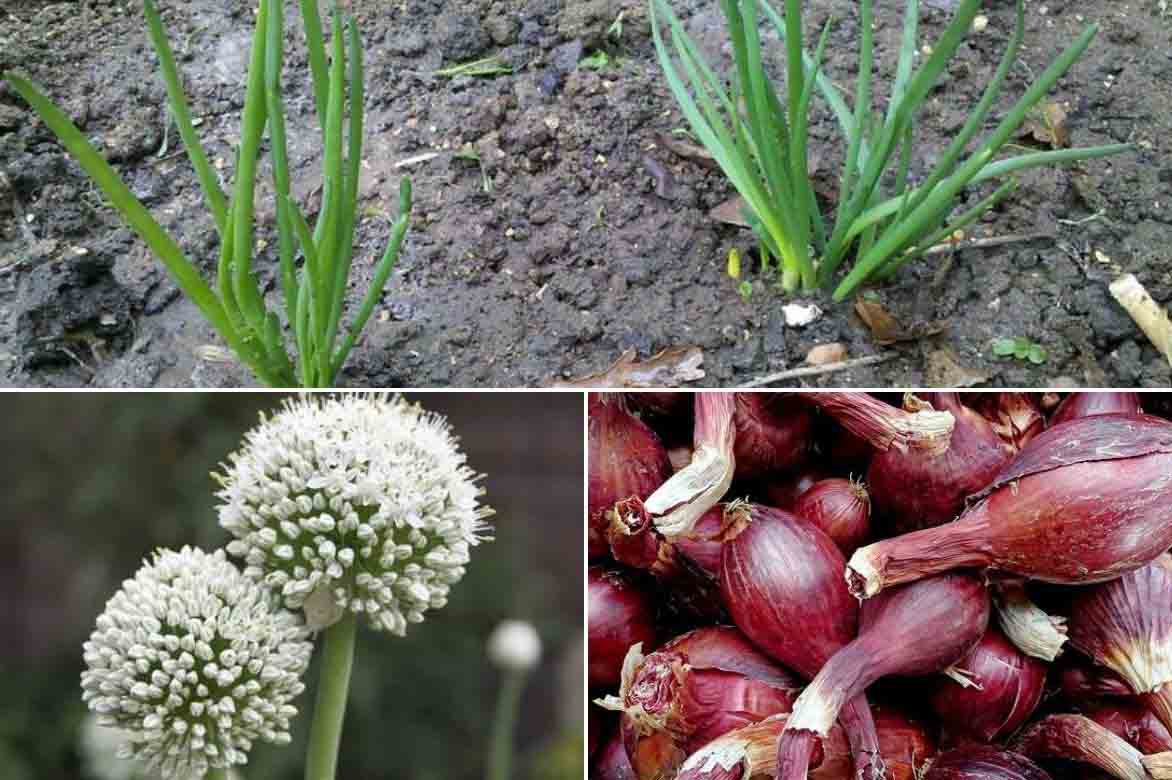 Shallot stems in the vegetable garden (photo: Ian May), the characteristic ball flower (photo: Emma Doughty), and the dry bulbs ready to consume!
Shallot stems in the vegetable garden (photo: Ian May), the characteristic ball flower (photo: Emma Doughty), and the dry bulbs ready to consume!
Description and botany
Botanical data
- Latin name Allium cepa
- Family Alliaceae
- Common name Shallot
- Flowering June to August depending on varieties
- Height 0.15 to 0.50 m
- Exposure Sun
- Soil type well-drained, light
- Hardiness -15°C
The Shallot (Allium cepa) is a culinary plant from the Liliaceae family, just like its close relatives, the onion, garlic, and chives. Native to the Mediterranean basin, it thrives in sunny locations with well-drained soil. The genus includes over 700 species.
There are mainly two categories of shallots: the pink and the grey. They also differ according to their planting period: autumn, winter, or spring. The presence or absence of the flower stalk is included in this classification.
- The pink shallot – Allium cepa var. aggregatum – has pink flesh and a pink or coppery yellow skin. It is the most common and includes round varieties (‘Red Sun’, ‘Ardente’, ‘Lyska’), long varieties (‘Jermor’, ‘Longor’…), and semi-long varieties (‘Arvro’, ‘Mikor’…). These varieties are sometimes nicknamed “chicken thighs.” It is planted from February to May, making it the spring shallot. Its flavour is similar to that of the onion.
- The grey shallot or common shallot – Allium oschaninii – has a smaller but elongated and curved bulb, a grey-brown skin, and pinkish-violet flesh (‘Griselle’); it is more aromatic but has a shorter shelf life. It is planted from October to December. This is the oldest species cultivated in France. This type of shallot is widely grown in the south of the country. It does not flower and does not produce seeds.
The shallot is a perennial bulbous plant but is cultivated as an annual. It is consumed for its bulb and sometimes for its aromatic stems with a garlicky taste. It forms a clump 20 to 50 cm tall, composed of fine, hollow, cylindrical green leaves. The leaves release an alliaceous scent when crushed.
The planted bulb becomes fleshy as it grows. It has “shoots” that, after planting, give rise to new bulbs or bulbils, which in turn will produce a unique clump. The shallot differs from its cousin the onion as it produces clusters of small bulbs, whereas the onion produces only one.
The shallot bulb is smaller than that of the onion. Depending on the species, it can be spherical or elongated. It is covered by a thin scaly film called a tunic. The epidermis or outer tunic varies in colour, depending on the variety, ranging from coppery yellow to dark red (‘Red Sun’).
The flesh consists of thickened overlapping leaves, the skins, which are actually the tissues that contain the nutrient reserves. Its flesh ranges from pink to pinkish-white or violet, with a delicate flavour that can be mild to pronounced, but in all cases, it is less assertive than that of the onion.
Some produce flowering spherical umbels that can be fragrant and will yield seeds.
It has been cultivated in France since the 12th and 13th centuries. Intensive cultivation appeared in the 17th century, particularly in Brittany and the Loire Valley.
Read also
Planting garlic, shallots and onionsMain species and varieties
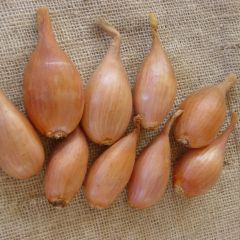
Jermor Shallot plants - Allium cepa
- Height at maturity 30 cm
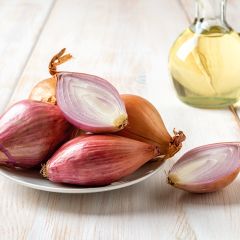
Longor Shallot plants - Allium cepa
- Height at maturity 30 cm
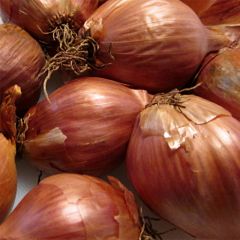
Shallot - Allium cepa aggregatum Ardente
- Height at maturity 30 cm
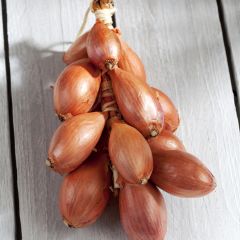
Griselle Shallot in plants (autumn planting) - Allium cepa
- Height at maturity 30 cm
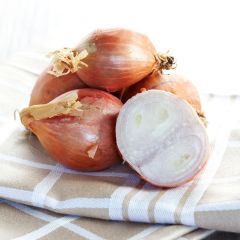
Mikor Shallot plants - Allium cepa
- Height at maturity 30 cm
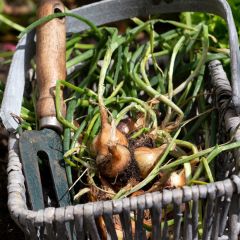
Shallot - Allium cepa var. aggregatum Red Sun
- Height at maturity 30 cm
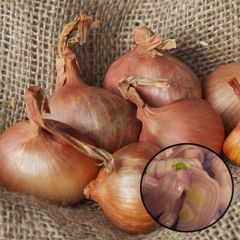
Shallot - Allium cepa aggregatum Golden Gourmet
- Height at maturity 30 cm
Discover other Shallot bulbs
View all →Available in 0 sizes
Available in 3 sizes
Available in 3 sizes
Available in 2 sizes
Available in 1 sizes
Available in 1 sizes
Available in 2 sizes
Available in 3 sizes
Available in 3 sizes
Shallot planting
Where to plant it?
From its Mediterranean origins, the shallot has retained the taste of sunshine and well-drained soils.
The shallot thrives in any light soil that is not too rich and well-drained. It should be planted in full sun, in any soil that does not retain water, as it fears excess moisture that can rot the bulbs. In heavy soil, it is advisable to plant it on raised beds to promote water runoff and drainage. Similarly, it cannot tolerate any recent organic fertiliser: a soil that is too rich or has been fertilised too recently increases the risk of rot.
Provide it with a location where you have not grown any allium for at least 3 years.
 Shallots are planted in sunny, well-drained soil (photo: M. Middleton)
Shallots are planted in sunny, well-drained soil (photo: M. Middleton)
When to plant shallots?
Plant pink shallots from February to April (or in autumn in mild climates) and harvest in July and August. Grey shallots are planted in October-November.
How to plant it?
Shallots dislike clay soils, excess moisture, and fresh fertiliser. If your soil is heavy, plant them on small raised beds with flat tops 10 to 20 cm high. You will need about 500g of bulbs for approximately 5 m².
- Mark out the rows by stretching a line, spacing them 25 to 30 cm apart.
- In well-prepared soil, push the bulbs in with your thumb, point upwards, to two-thirds of their height (about 2-3 cm deep), so that the tip is just above the surface.
- Leave 15 to 20 cm between each bulblet.
You will find more useful information in our Guide: “Planting Garlic, Shallots, and Onions”.
Shallot care and companion planting
Growing shallots requires minimal maintenance. Shallots are sensitive to moisture: no watering is necessary after planting, nor afterwards. Hoe and weed in autumn and spring at the beginning and during the growing season to keep the soil clean and aerated. Only water in cases of severe drought if it occurs during bulb formation. It is better to hoe than to water.
In the case of a rainy season, do not hesitate to unearth (lightly clear the soil) the base of the bulbs.
Remove any flowers to prevent them from unnecessarily exhausting the bulb.
Shallot bulbs are averse to excess nitrogen, so it is advisable to avoid any application of fresh manure before and after planting, as this would increase the risk of rot and poor storage.
In companion planting, alternate rows of shallots with carrots, strawberries, salads, beetroots, and tomatoes. However, shallots do not like the company of legumes such as peas, broad beans, and beans.
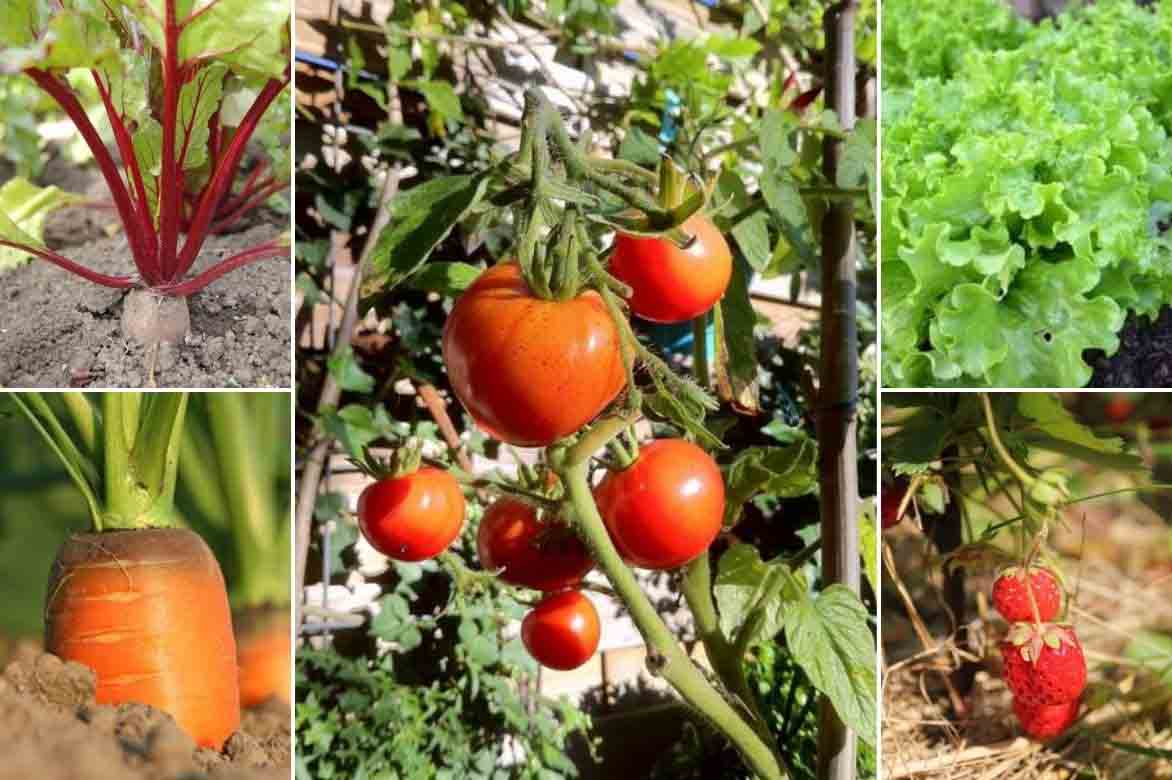
Beetroots, carrots, tomatoes, salads, and strawberries are the best companions for shallots in the vegetable garden
Common shallot diseases
Shallots are susceptible to a number of bacterial or fungal diseases.
To limit the risk of diseases, carry out a rotation of about 5 years before growing vegetables from the same family (garlic, onion, leek) again. Only plant healthy bulbils, free from mould.
Onion fly
From late spring to early autumn, it lays its eggs in the soil at the neck of the shallot. Its larvae feed on the bulb: the leaves yellow prematurely, and then the inside of the bulb rots. Pull up and destroy affected plants as they can easily spread from one plant to another. An insect net can be a solution. Weekly sprays of horsetail or tansy decoction as a preventive measure will also provide protection. Always avoid spraying nettle manure, which is too rich in nitrogen.
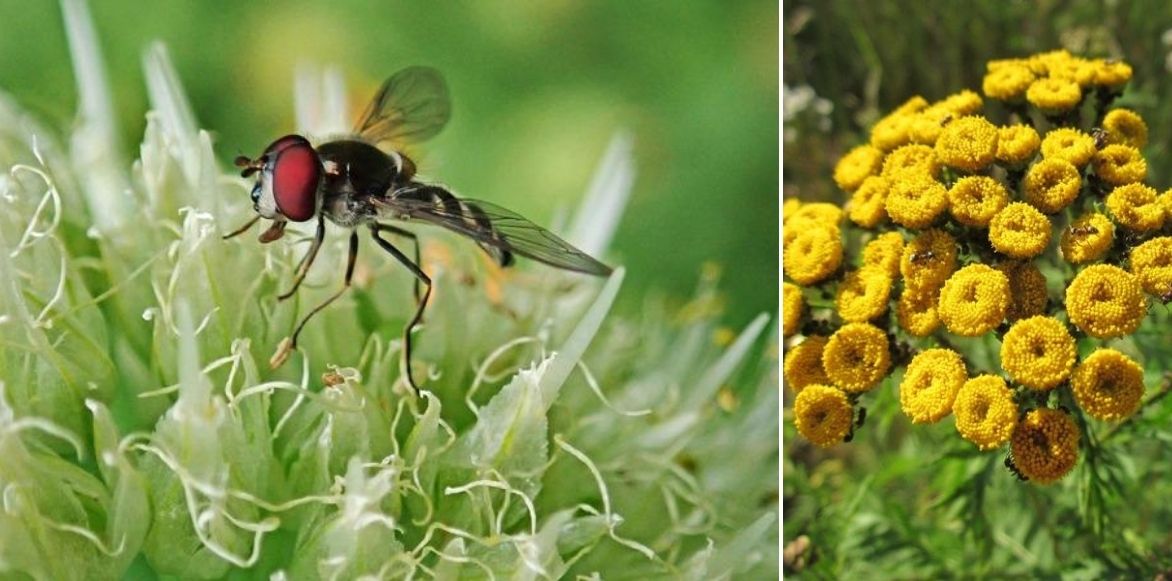 The onion fly is a common pest on shallots. Tansy decoction proves very useful as a preventive measure.
The onion fly is a common pest on shallots. Tansy decoction proves very useful as a preventive measure.
Downy mildew
This disease is caused by a fungus that develops in warm, humid conditions: a greyish-purple fluff invades the leaves, which then dry out very quickly, threatening bulb rot: remove affected plants and spray Bordeaux mixture over all the ranks.
Multiplication
Shallots multiply exclusively by division of bulbils. You can replant the shallots you have harvested from the vegetable garden the following year.
Harvest and storage
Harvesting
Depending on the varieties, bulbs will take between 90 to 120 days to form. Shallots can be harvested either green or dry.
- Green: Pull up the clumps as soon as the bulb is formed. The stems can also be harvested when they are green in spring and used like chives.
- Dry: Shallots are harvested in summer, from late June to early August when the leaves start to yellow and fall over. Pull up the bulbs and let them dry for 4 or 5 days on the ground in the sun. Remove excess dried soil by gently shaking them.
Storage
Fresh shallots can be stored for a few days in the refrigerator’s vegetable drawer.
To store them dried, after pulling up the bunches, continue drying the bulbs in a dry, airy place. Cut the stems to 1 cm above the collar. You can also braid the stems together and hang them up. Once they are thoroughly dry, sort the bulbs, checking for any bruises or rot that could contaminate the entire harvest. Store them in a crate or tray, either loose or in bunches, in a dry, cool place (with a minimum of 15 °C) and well-ventilated. Shallots can be stored for several months under good conditions. Grey shallots last for 6 to 7 months, while pink shallots last longer, between 10 and 12 months. Over the months, regularly check their condition and remove any rotten bulbs.
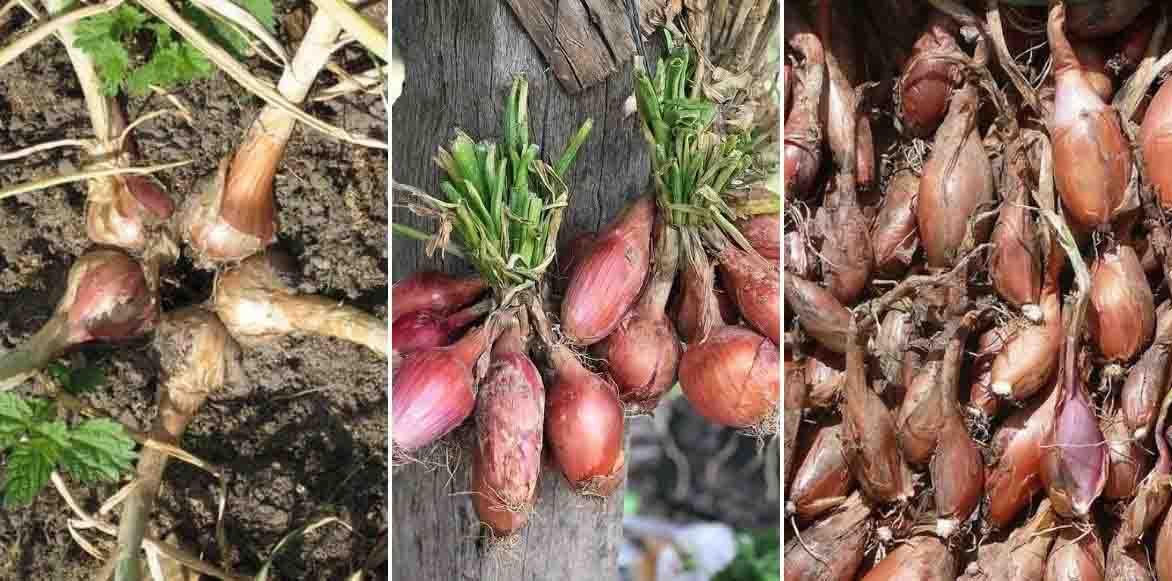 Shallots require a period of “drying” in place in the vegetable garden. Feel free to make braids or tie them up to ensure they dry properly.
Shallots require a period of “drying” in place in the vegetable garden. Feel free to make braids or tie them up to ensure they dry properly.
Usage and benefits
Highly valued in cooking, shallots are consumed raw, finely chopped, to enhance salads and raw vegetables, or cooked to flavour stews and sauces. They are also enjoyed confit to accompany meats, cold cuts, or roasted vegetables, taking on a sweeter flavour.
Shallots are rich in sulphur compounds, vitamins B, C, E, trace elements, antioxidants, and mineral salts. They have a beneficial effect on the cardiovascular and digestive systems. They are also slightly diuretic. Foods from the allium family, of which shallots are a part, are recognised for their protective effects against certain cancers.
Useful resources
- Find our range of shallots to plant
- Subscribe!
- Contents
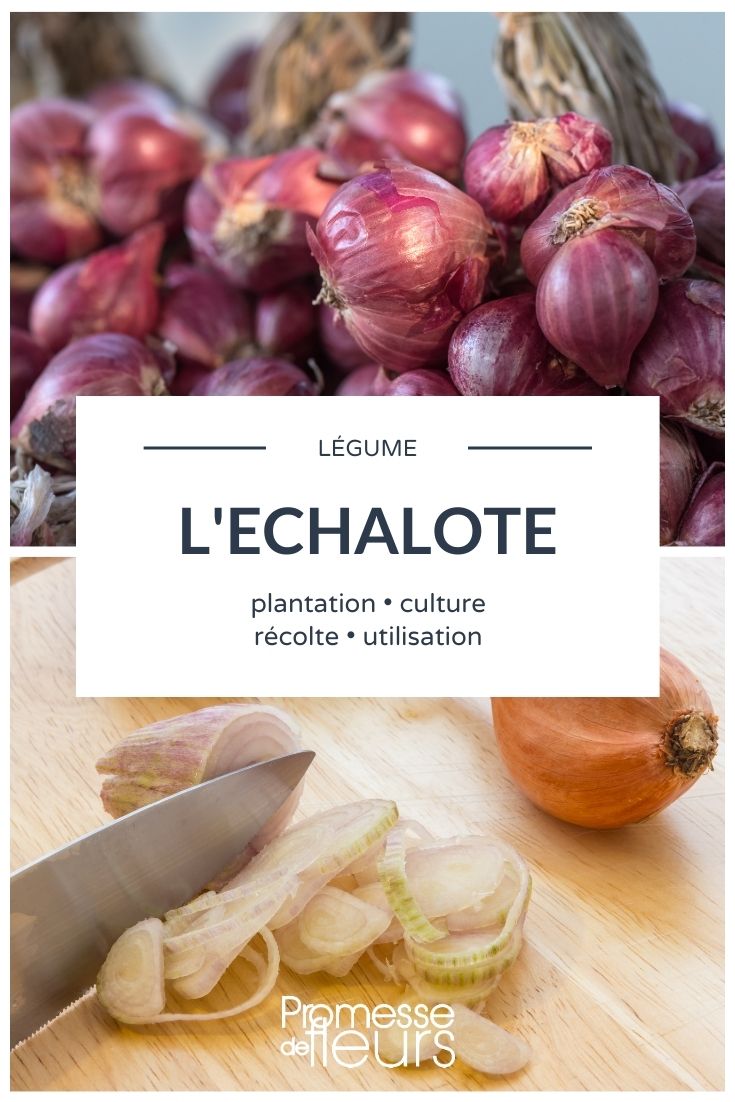































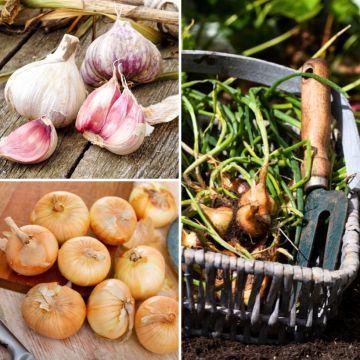


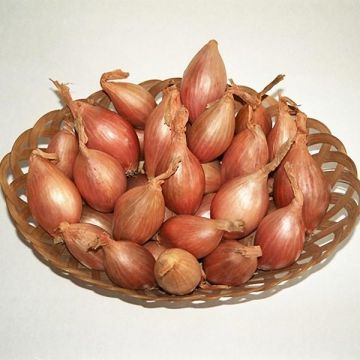
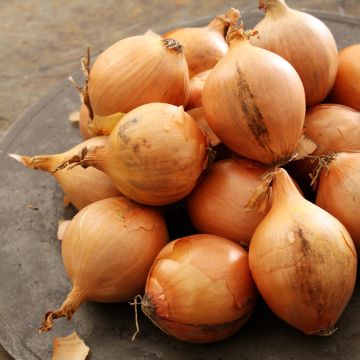




Comments